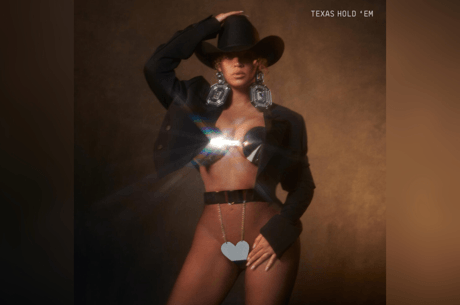Poker & Pop Culture: The Many Versions of Bat Masterson

Continuing our look at "saloon poker" in the 19th century, another figure steps forward for closer inspection from the roster of early poker-playing "heroes" — the famous buffalo hunter, gambler, gunfighter, occasional lawman, and later journalist Bat Masterson.
A Night in Sweetwater Turns Sour
Born in Quebec in 1851, Masterson's family moved about until settling in Kansas, then he and his brothers left the farm to hunt buffalo. Some time after in Texas he was said to have participated in a famous battle defending a small town from the siege of a Comanche tribe, though details of his involvement are sketchy.
A couple of years after that came the most discussed event of Masterson's young life when he found himself in a deadly shootout in a Sweetwater, Texas saloon in early 1876 amid card playing and carousing. The event occurred just a few months before another poker game in Deadwood, South Dakota would end abruptly in violence to add Wild Bill Hickok's name to the list of poker legends.
There exist but few details from the gunfight at the Lady Gay Saloon, and even they are disputed. Some say Masterson found himself in a draw poker game involving an ill-tempered and drunk Army corporal named Melvin A. King who after losing stormed out in a huff. Soon after Masterson began chatting with Mollie Brennan, a former prostitute and current dance hall girl, and some time later an angry King returned with his pistol drawn.
Whether King was mad about the game or upset with the attention Brennan was giving Masterson isn't clear. More certain is that King's first shot crippled Masterson (hitting him in the pelvis) and his second felled Brennan, killing her. Masterson returned fire, killing King.
Masterson was wounded severely enough to require a cane to walk thereafter. In fact, some even suggest Masterson — who was born Bartholomew and later took the name William [Removed:293] Masterson — earned his nickname "Bat" from his subsequently using the cane as a weapon to help keep the peace as a lawman. But there's more invention than truth in that idea, as "Bat" was a name by which he'd been called before.
The Sweetwater gunfight story essentially ends there, though many repetitions thereafter would help vault Masterson to the status of one of the West's most legendary gunfighters.
Laying Down the Law, Grinding the Games
Masterson's reputation as a poker player and gambler would continue to grow as well, thanks to his travels through several states and many instances of winning large sums at the tables.
Soon he'd become friends with Wyatt Earp and along with the Earp brothers and Doc Holliday was part of the famous "Dodge City Gang" (a.k.a. the "Dodge City Peace Commission") that for a time took on the task of policing the Kansas town. Masterson would likewise serve as a sheriff in Kansas and a marshal in Colorado as he further built an eclectic résumé.
Besides his charge to uphold the law and keep order, Masterson frequently also managed the gambling wherever he went, overseeing poker and faro games along with roulette and other fare.
He would be involved in other gunfights as well, although historians argue over whether he killed anyone else. One story involves Masterson avenging the shooting death of his brother, Ed, although it isn't clear if he actually was the one pulling the trigger to administer frontier justice.
Masterson was involved in another gunfight alongside Earp in Dodge. In fact, not long before the famous "gunfight at the O.K. Corral" (discussed last week) Masterson would join his friend Earp in Tombstone where among other activities he dealt faro in the Oriental Saloon.
A Legend Born from a Bluff
It was around that time an interesting twist arrived helping to further the legend-making of Bat Masterson, gunfighting gambler.
An enterprising writer for the New York Sun named William Young found himself in Gunnison, Colorado in late summer 1881 in search of "a sensational shoot-'em-up western story to titillate his eastern readers," explains Old West historian Robert K. DeArment.
While there Young met a certain Dr. W. S. Cockrell who proceeded to point out a certain fellow to the reporter, identifying him as the famous Bat Masterson who by age 27 had already killed 26 men. Cockrell went on to provide further details of Masterson's exploits, which included one of Masterson having shot and killed seven men in one vicious swoop in response to his brother's murder.
Young went back to New York and published the stories, which were soon reprinted and shared throughout the country, making Masterson into a larger-than-life emblem of the "Wild West." Truth be told, Masterson was nowhere near Gunnison at the time of the reporter's visit. The man Cockrell pointed out to the reporter was someone else, and the stories he told about Masterson were all spun from his own imagination — nothing more than a cheeky bluff.
For the next several decades Masterson would consistently deny the popular stories that portrayed him as a cold-blooded killer, though the legend continued to follow him wherever he went. Theodore Roosevelt (himself a poker player) would later seek to meet Masterson thanks to those stories, as did many others.
As DeArment reports, a Fourth of July celebration in 1885 in Dodge City included a vote among residents to name "the most popular man in Dodge City." Proving the extent of his celebrity, Masterson won in a landslide and was awarded a gold watch and gold-tipped cane.
The last act of Masterson's life involved him moving to New York City and pursuing a career as a columnist for The Morning Telegraph. A boxing enthusiast, Masterson attended and reported on the biggest bouts for much of his later life while also writing on other subjects for his thrice-weekly column, "Masterson's Views on Timely Topics."
Interestingly, it was the erroneous reporting of another New York writer that partly positioned Masterson to become a journalist himself, as the fame created by those stories opened doors for Masterson to pursue his writing career.
On Broadway, in Living Rooms, and Battling Cartoon Cats
It was in New York Masterson would become friends with fellow scribe (and fellow gambler) Damon Runyon, who after spending his early career writing in Colorado moved to New York City shortly after the turn of the century and began writing about baseball for the Hearst newspapers.
Runyon would also write numerous memorable short stories about gambling, including one called "The Idyll of Miss Sarah Brown" featuring a character named "Obadiah Masterson," nicknamed "The Sky." That story — along with an account of a craps game borrowed from another — would form the basis for the later Broadway production of Guys and Dolls, with Marlon Brando playing Sky Masterson in the 1955 film adaptation.
The Masterson of Runyon's story and the popular musical — closely identified with the big city and willing to bet on anything — is also somewhat removed from the original, primarily sharing only the gambling theme and status as a ladies man. Indeed other famous gamblers — including Titanic Thompson — provided as much or more direct inspiration for the character, though the name was unmistakably an homage to Bat.
By then, of course, the Bat Masterson legend had grown still further following his death in 1923, with characters often based on the exaggerated version of Masterson appearing in Old West histories and numerous early western films. Then in the late 1950s came a couple of television series featuring the character, one of them being a Gunsmoke-style drama The Life and Legend of Wyatt Earp.
It was the competing series Bat Masterson that ran from 1958 to 1961, however, that most influenced the historical figure's reputation. Based in part on a 1957 biography by Richard O'Connor, the light-hearted series featured Gene Barry as a forty-ish Masterson whose fashion sense made him something of a dandy with a derby hat, vest and jacket, and always-present cane. In fact, this version of Masterson often wouldn't even carry a gun, using his cane instead whenever trouble arose.
A comic book was simultaneously produced as a tie-in with the TV series, and countless other iterations of the character followed, including an episode of Hanna-Barbara's early 1960s cartoon Punkin' Puss & Mushmouse (a cat-versus-mouse Tom and Jerry ripoff) relating the story of "The Legend of Bat Mouseterson" (Mushmouse's cousin who comes for a visit). There, too, is the character a cane-wielding fop, hardly related to the Old West context in which existed the historical Masterson.
An Old West Character
It's almost appropriate we've veered over into cartoons and parodic versions of Masterson, given how even when he first achieved fame the image he enjoyed was already significantly removed from reality.
Masterson's own storytelling abilities as exhibited in his columns were much appreciated, and those who knew him in later life noted his sharing of tales from his earlier Old West self. But he himself became a character in many others' stories, too — or rather, the basis for several, wildly different characters.
From the forthcoming "Poker & Pop Culture: Telling the Story of America’s Favorite Card Game." Martin Harris teaches a course in "Poker in American Film and Culture" in the American Studies program at UNC-Charlotte.
Want to stay atop all the latest in the poker world? If so, make sure to get PokerNews updates on your social media outlets. on Twitter and find us on both and !









